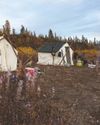
In 2014, H.G. Watson, a freelance journalist and Ryerson journalism instructor, wrote for rabble.ca that “The labour beat – the reporters who write about workers, unions and all that it encompasses – has all but disappeared from newsrooms across North America. And with it, stories about workers’ struggles that are now slipping through the cracks.” By 2016, J-Source’s Errol Salamon had reversed course, pronouncing the beat “back from the dead.” So, which is it?
Watson, when asked if she still agrees with her characterization of labour journalism from 2014, now says that, in some ways, the field has rebounded.
“Yes and no. I think, if anything, we’ve seen a rise in the amount of reporting on labour even if we don’t necessarily call it labour – it’s not how, traditionally, labour has been viewed.”
In contrast to labour reporting in its heyday of the mid1900s, which saw reporters covering union conferences and intra-union politics, labour reporting today is more likely to cover the struggles of non-unionized workers. “The way labour itself works has changed,” Watson explains. “We have much more precarious labour, we’ve seen the rise of contracts, of the changes in manufacturing, the shifts in what kind of labour people predominantly do – so I think that has, as well, shifted what labour reporting actually is.”
David Bush, an editor at RankandFile.ca, says the corporate consolidation of media ownership and the shuttering of local outlets has “pushed the labour beat aside to the point where we have a mainstream press situation in Ontario where there is one person who regularly covers workplace issues – that’s Sara Mojtehedzadeh from the Toronto Star.”
This story is from the November/December 2019 edition of Briarpatch.
Start your 7-day Magzter GOLD free trial to access thousands of curated premium stories, and 8,500+ magazines and newspapers.
Already a subscriber ? Sign In
This story is from the November/December 2019 edition of Briarpatch.
Start your 7-day Magzter GOLD free trial to access thousands of curated premium stories, and 8,500+ magazines and newspapers.
Already a subscriber? Sign In

PLATFORMS FOR PEOPLE, NOT PROFIT
Digital platforms boast that they’ve “democratized” cultural production. But what would truly democratic platforms look like in Canada?

ORGANIZING THROUGH LOSS IN THE HEART OF OIL COUNTRY
The story of climate justice organizing in Alberta, at the heart of the tarsands, is the story of a group of young activists learning what it means to lose, and keep on fighting

GROWING THE LABOUR MOVEMENT
How unions are using community gardens to engage members, nourish communities, and help strikers weather the picket line

A NEW ERA FOR OLD CROW
In the Yukon’s northernmost community, the Vuntut Gwitchin First Nation is reckoning with how to preserve their land and culture, amid a warming climate and an influx of tourists

“At Least Hookers Get Wages”
The risky business of sex work in the gig economy

The Literal – And Literary – Futures We Build
Briarpatch editor Saima Desai talks to two judges of our Writing in the Margins contest about Idle No More and MMIWG, ethical kinship, writing queer sex, and their forthcoming work.

The Cost Of A T-Shirt
In Honduras, women maquila workers are fighting back against the multinational garment companies that they say are endangering their health and safety.

Milking Prison Labour
Canada’s prison farms are being reopened. But when prisoners will be paid pennies a day, and the fruits of their labour will likely be exported for profit, there’s little to celebrate.

Bringing Back The Beat
In mainstream media, labour journalism has been replaced by financial reporting and business sections. But journalism students are raising the labour beat from the grave.

There's No Journalism On A Dead Planet
Corporate media owners are killing local newspapers – which is making it impossible for everyday people to understand the on-the-ground impacts of the climate crisis